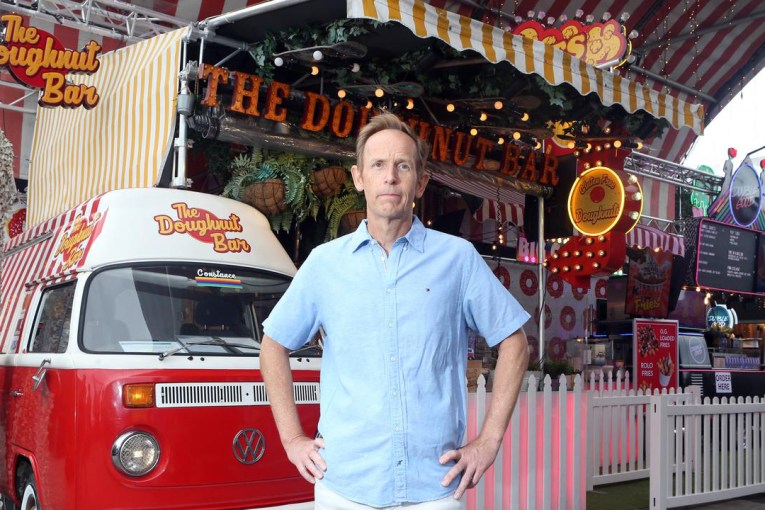An extract from The Daily Aus creators new book No Silly Questions
In today’s summer reading extract, Sam Koslowski and Zara Seidler, the creators of the phenomenally successful news service The Daily Aus (430k Instagram), will help you understand the news stories that matter and to feel confident being a part of the important conversations, whether you’re walking into a date, a work event or a voting booth.

Why care about economic growth?
We’re interested in economic growth because a growing economy is often associated with better living standards.
Think of a very small economy – say, a village with cows and chickens. If one year the village suddenly has more cows and chickens producing more milk and eggs, a few things happen.
- Fewer villagers go hungry because there’s more milk and eggs.
- More villagers are employed because more workers are needed to tend to the extra animals, and these workers make more money.
- The village government might collect more tax from these village workers and so it has more to pay for healthcare or education.
Sure enough, we do see a link between economic growth and non-economic measures of wellbeing such as life expectancy.
‘Advanced’ economies (with higher GDP per person) tend to have more advanced standards of living.
Of course, pursuing economic growth at all costs can have other consequences we care about. Again, GDP alone tells us nothing about how a country’s resources are distributed – what if one farmer keeps all the milk and eggs and the other villagers starve? GDP is an important number, but it’s just one number.
How does the government manage the economy?
Now, let’s turn back to one of the key players in any economy: the government.
There’s no more important government document when it comes to the economy than the government’s annual budget.
It shapes how much tax you pay, what your university fees are, what medical treatments you can access and maybe even whether you’ll be able to purchase a house. But what is it? Let’s start simple. Just like a household budget, the government’s budget can be split into two components: how money is earned and how it is spent.
Governments can get money in two ways – by raising taxes, or by borrowing money.
MONEY COMES IN
The federal government’s three biggest sources of tax are:
- Personal income tax
2. Company tax
3. Goods and services tax (GST)
MONEY GOES OUT
What does the federal government spend that money on? Here are the top four areas of spending, or expenditure:
1. Welfare and social security (e.g. Centrelink payments, disability care, aged care)
2. Health (states and territories also fund health)
3. Education (states and territories also fund education)
4. Defence
In each of these areas are all sorts of small things we might care about – medicine or a university course fee, for example.
But we also need to think about how overall levels of tax compare to overall levels of spending.
If the government raises more money than it spends in a year, we say its budget is in surplus. When a government spends more than it raises, the budget is in deficit.
Whenever there is a deficit, the government makes up the gap by borrowing money, which it agrees to pay back at some future date with interest. This is called debt. Deficits increase the amount of debt and surpluses decrease them.
DEBT IS NOT ALWAYS A DIRTY WORD
The word ‘debt’ has negative associations – if you borrow a lot of money and find yourself in a lot of debt that you can’t repay, you’ll land yourself in a fair bit of trouble, and you’ll certainly struggle to find anyone willing to lend to you again.
But government budgets are not like our personal budgets. For governments, debt is an important and useful tool. Every single government in the world has some debt. We can think of it as a way to unlock more spending today than would otherwise be possible. Of course, it has a cost: the interest the government will eventually have to pay on that debt.
Is that cost worth it? The short answer is it depends what you spend it on.
If the government uses the money in ways that improve the economy, maybe by putting more people through university or building more affordable housing, the situation is like that village with its extra cows and chickens: the country gets richer, the government collects more tax, and it can afford its interest bill.
There are lots of reasons why governments will want to run deficits and accumulate debt, especially during weak economic periods.
But governments do have to be careful. If they run up too much debt, their interest bill might get very expensive. If it gets really out of control, in the worst-case scenario a government might ‘default’ – fail to pay back its debts. This seriously hurts its credibility and its ability to borrow more in future.
As we can see, the government is a very important player in an economy – it can use its budget to help the economy through a crisis, but abusing its budget can create a crisis of its own.
To understand this a little better, let’s take a look at the two main types of ‘crisis’ that can commonly hit an economy, and how the government responds to each: inflation and recession.
What is inflation?
In its simplest form, inflation means prices rising – not one price, but the total ‘level’ of prices across an economy.
Why does this happen? To answer that, we’ll need our new friends supply and demand. Inflation is typically caused by one of two things (or both!): too much demand or not enough supply.
Let’s unpack that with two hypotheticals.
First, imagine if we wake up tomorrow and half the items in every supermarket have vanished. Suddenly, there’s a bigger than- usual scramble for the remaining items. The supermarket owners can get away with charging higher prices. Not enough supply = inflation.
Second, imagine if we wake up tomorrow and everyone has an extra million dollars. We’d likely all run out for a shopping spree and would be willing to pay a lot more for things than we were yesterday, since we’re all flush with cash. Again, businesses can get away with higher prices. Too much demand = inflation.
Ask yourself this: is anyone richer in the second scenario? The technical answer is, yes, a million dollars richer! But the meaningful answer is, no: you have a million dollars more, but so does everyone else, so you’re really no better off. Once prices go up, you won’t be able to buy anything you couldn’t afford before.
Inflation on its own is not necessarily a problem, and in fact a little inflation is considered healthy. But if inflation gets out of control, it can have negative consequences. When prices change rapidly and unpredictably, it’s hard to make big financial decisions, and if your wages can’t keep up, your cost of living will be greater.
For this reason, governments and central banks get particularly concerned about major periods of inflation. This could happen for any number of reasons. For example, inflation can be kickstarted by a big global event, like a war, which suddenly cuts off access to something everyone needs. This is exactly what happened around the world in 2022 when Russia invaded Ukraine, restricting the global supply of oil, gas and wheat, and setting off inflation around the world.
FIGHTING INFLATION
Suppose inflation breaks out. What can be done? There are a few options for government. Remember, the problem is effectively that there is too much spending (demand) and not enough to buy (supply). There’s not usually much governments can do in the short term to get more supply of something that’s running out, but governments can reduce demand by taking money out of the economy.
The government can do this with its own budget, by raising taxes or cutting spending. But the most common tool to fight inflation sits with the central bank: interest rates.
Interest rates
Interest is the price you pay someone for lending you money.
If your friend lends you $100 today and asks for $101 back tomorrow, the extra $1 is the interest – in this case, an interest rate of 1 per cent.
You can think of this rate as paying your friend for their trouble. Alternatively, you can think of it as compensating them for the risk they took on when they parted with their $100 – the risk of you losing it and being unable to pay them back.
If your friend is willing to lend to you with just a 1 per cent interest rate, that’s a sign they trust you. If, on the other hand, they ask you to pay them back $150, it’d be a sign they’re worried you won’t repay and are looking for some extra reassurance.
What does any of this have to do with inflation? The RBA has the power to change the interest rate it charges banks, with the expectation banks will pass any changes on to their customers. If the RBA increases the interest rate it charges banks, and the banks increase rates for their own customers, the result is that borrowing money becomes more expensive for everyone. If it’s more expensive, people are less likely to borrow. If people borrow less, they have less to spend, and there’s less demand to push up inflation.
There’s no getting around it – this stuff is enough to make your head hurt. But the long and the short of it is this: interest rates are an important tool for central banks to fight inflation. They are like medicine for inflation. However, it’s painful medicine. It makes anyone with a mortgage, or another kind of loan, pay more, which can be very difficult for anyone on a tight budget.
The RBA is aware of this, and it has to balance its efforts to fight inflation against the risk of going too far in the other direction. If the RBA cuts spending too much, it could unleash the other type of economic natural disaster.
Drum roll, please, for the big R . . .
What is a recession?
A recession is a period of economic decline.
We can measure it using GDP – if a country’s GDP shrinks for six months in a row, we say it is ‘officially’ in a recession.
Why do recessions happen? It can be just about anything. In the 1990s, a recession was caused because investors suddenly decided they’d become overexcited about new internet businesses and withdrew their investments. In 2008, a major worldwide recession was caused by a collapse in the US housing market. In 2020, a recession was caused by the pandemic, which saw entire cities grind to a halt and many forms of economic activity cease.
The causes might be different, but the consequences are usually the same: in a recession, spending is low, businesses are forced to shut and jobs are lost.
FIGHTING A RECESSION
Governments and central banks fight recessions by trying to encourage spending.
The government can do this via its budget by cutting taxes or raising spending. We call this stimulus. The government did this during the pandemic by giving money to businesses to pay staff who couldn’t work during lockdowns, to keep businesses, people and spending afloat.
The central bank can help, too, by cutting interest rates instead of raising them so that it becomes easier to borrow and easier to spend.
Sounds like the exact opposite of an inflation crisis? You’re on the money. Economists often talk about the economy as moving in a cycle – periods of recession and stimulus are often followed by periods of out-of-control spending and inflation. Rinse, repeat.












